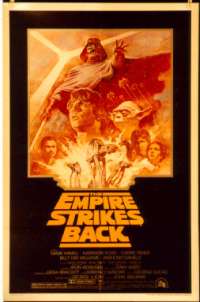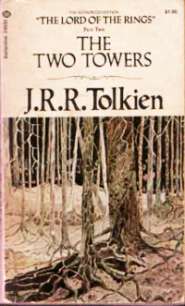I’m currently trying to finish my second novel, MultiReal, and I’ve been spending an inordinate amount of time thinking about sequels.
There are really two kinds of sequels.
The first kind of sequel is the continuation of a story that didn’t necessarily need continuing in the first place.
 Think The Empire Strikes Back. Even though the remaining five films in the saga were (supposedly) roiling around in the murky depths of George Lucas’s mind before Star Wars became a worldwide sensation, there’s nothing about Star Wars that demands sequelization. All of its main character arcs and plot points were tidily wrapped up at the end of the first film. As far as we knew in 1977, the destruction of the Death Star was the turning point in the Rebellion, and Darth Vader spent the rest of his days in exile scrounging spare parts for his iron lung.
Think The Empire Strikes Back. Even though the remaining five films in the saga were (supposedly) roiling around in the murky depths of George Lucas’s mind before Star Wars became a worldwide sensation, there’s nothing about Star Wars that demands sequelization. All of its main character arcs and plot points were tidily wrapped up at the end of the first film. As far as we knew in 1977, the destruction of the Death Star was the turning point in the Rebellion, and Darth Vader spent the rest of his days in exile scrounging spare parts for his iron lung.
The second kind of sequel is the continuation of a story left incomplete by design.
Switching geek analogies, think The Two Towers. (Film or book version, doesn’t matter.) The Two Towers could not exist in isolation. Its entire raison d’etre is to act as a bridge between The Fellowship of the Ring and The Return of the King. Without Fellowship, you wouldn’t have a clue where this evil Ring thing came from and why it’s so crucial to the plot. And without King, our protagonists would be stranded (literally) in the middle of a wilderness, in a state of greater tension and uncertainty than when the story began.
 This second kind is the type of sequel that MultiReal is. A bridge. A ratcheting up of tension. A continuing exploration of themes.
This second kind is the type of sequel that MultiReal is. A bridge. A ratcheting up of tension. A continuing exploration of themes.
Like The Fellowship of the Ring, Infoquake is the first chapter of a three-part story. As I’ve explained elsewhere (in my article “Why I Wrote Infoquake“), Jump 225 was originally conceived and written as a single, contiguous novel. And so the reader finishing Infoquake is left with major plot points unresolved and major characters whose fate is unclear. In fact, I made a conscious plan to divvy up the technologies, locales, and concepts I wanted to explore between the three parts before I started.
Now here’s the problem: writing that second kind of sequel is really frickin’ hard.
Unlike with the standalone novel, the writer of the sequel has to deal with all kinds of additional challenges. To wit:
1. Some of your readers haven’t read Book 1. They’ve picked up Book 2 not realizing or not caring that there’s a first book in the series. (My dad is notorious for doing this.) Don’t count on your publisher requiring consumers to pass a quiz about the events of Book 1 before they can buy Book 2.
2. Some of your readers finished Book 1 years or even decades ago, and thus have likely forgotten crucial plot points in the interim. You can’t expect that everyone will take the time to reread Book 1 before they start Book 2, so you must include copious recapping. You must reintroduce each character’s signature quirk all over again without seeming so obvious about it. But…
3. Some of your readers did just put Book 1 down, and won’t be in the mood to slog through a 60-page recapitulation of everything they’ve just read. They don’t have the patience to hear your protagonist say things like, “That reminds me of the curious incident with the vampire that happened three months ago.” So you need to convince them quickly that Book 2 is worth an investment of their time and energy.
4. You need to meet your readers’ expectations. The readers who were so thrilled with the vampire/giant piranha neck-biting duels from your first book will be picking up your second book expecting more vampire/giant piranha neck-biting duels. Not just more duels, but better and cooler ones.
5. You can’t pander to your readers’ expectations. These same readers will be bitterly disappointed if you stick to the same old vampire/giant piranha neck-biting duels without coming up with anything new. And don’t think you can just throw a one-eyed space pirate in there and make it a three-way fight. That’s cheating. (Remember The Matrix: Reloaded? More wire-fu. Yawn…)
6. You need to keep the reader hooked for Book 3. Just because the reader has invested in Book 2 doesn’t mean they’re going to plunk down money for Book 3. So you need to leave your readers satisfied and yet still wanting more. But the most crucial problem is…
7. Book 1 might not even be out yet. So you can’t gauge how well your audience reacted to Book 1, or what they thought of the vampire/giant piranha neck-biting duels in the first place. You don’t know what kinds of zeitgeist-shattering world events are going to take place between now and that mythical future date when your second book hits the shelves. (Another September 11th? A global depression? A law banning the sale of all vampire books?)
Got all that?
And oh yeah, while I’m at it, did I mention that your reputation as an artist and possibly even your career is on the line? That your agent and your publisher will not only be carefully monitoring how well your book sells, but how well it sells compared to your first? (Sell twenty thousand copies of Book 2 and think it’s time to celebrate? Not if Book 1 sold forty thousand copies.)
The upshot of all this is that MultiReal, the second book of the Jump 225 Trilogy, is still being tweaked. I’m in the process of going through and ironing out wrinkles such as:
- Smoothing out the necessary expository passages that recap Infoquake
- Trying to figure out how to ameliorate a cliffhanger ending that really does involve a cliff
- Reintroducing the dozens of technical terms and concepts that I worked so hard to introduce in the first book
- Carefully setting up the reader’s expectations once again, only so I can ruthlessly turn them on their head
- Foreshadowing the even-more-complicated events of book 3, Geosynchron
So to all those who will (hopefully) be asking the question of whether David Louis Edelman is a one-trick pony, I quote the great Yoda: “Not if anything to say about it I have.” MultiReal will be worth the wait.
You can count on it.